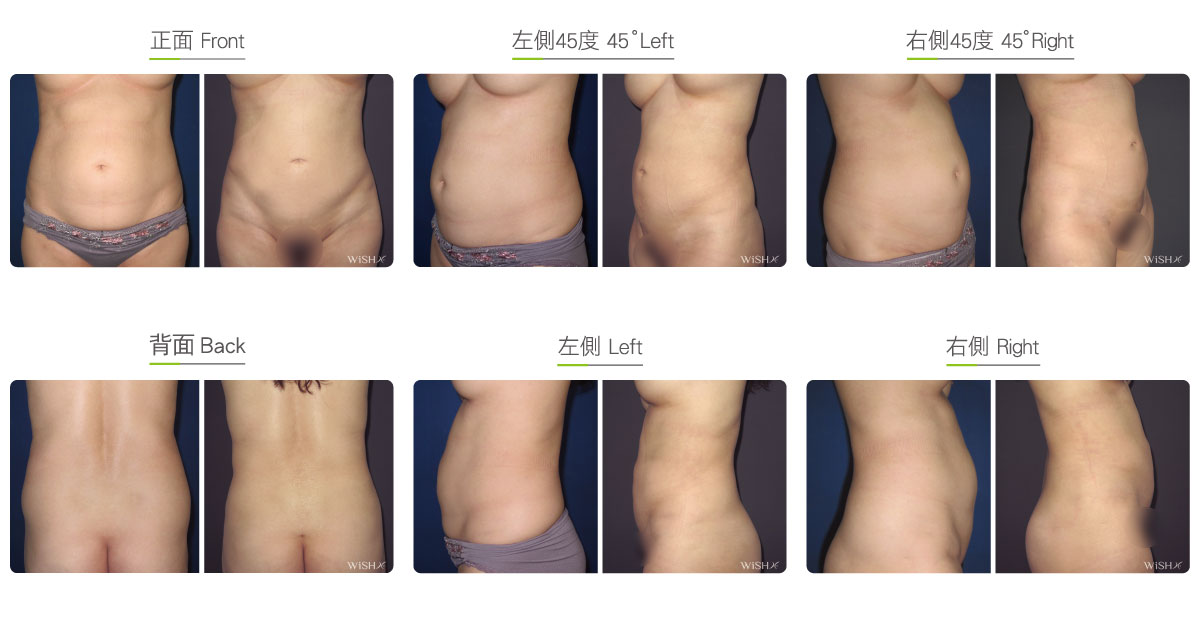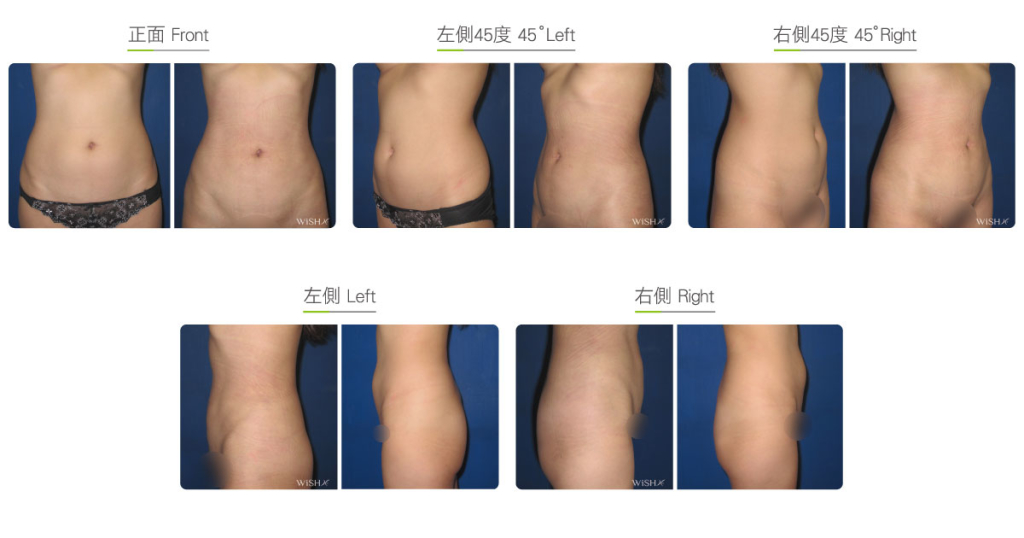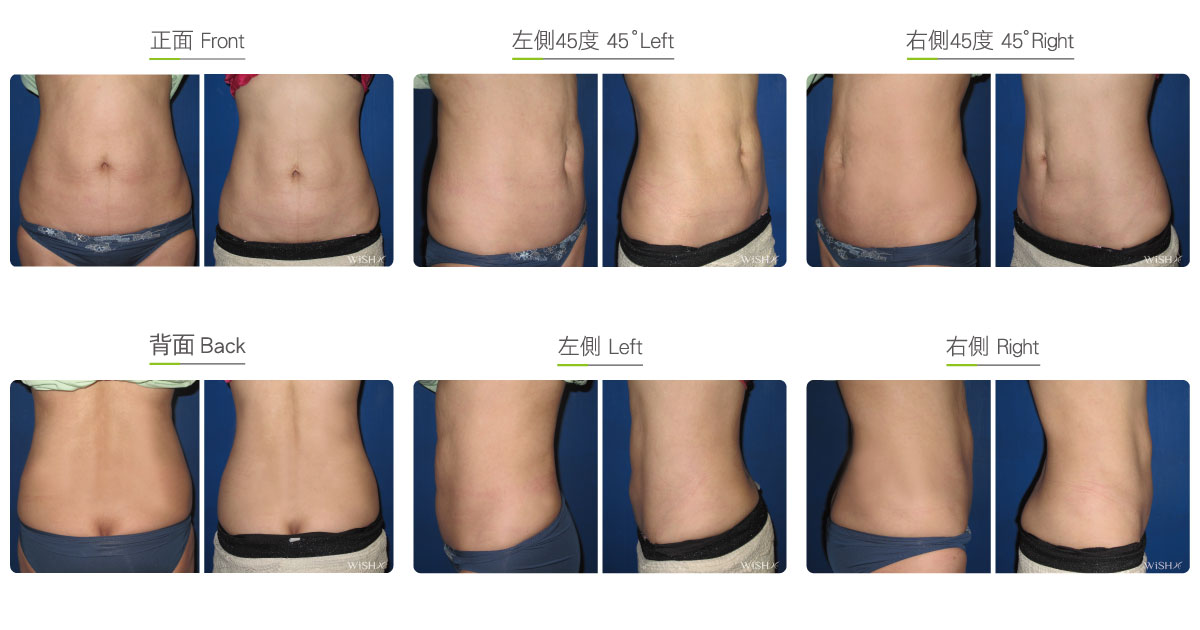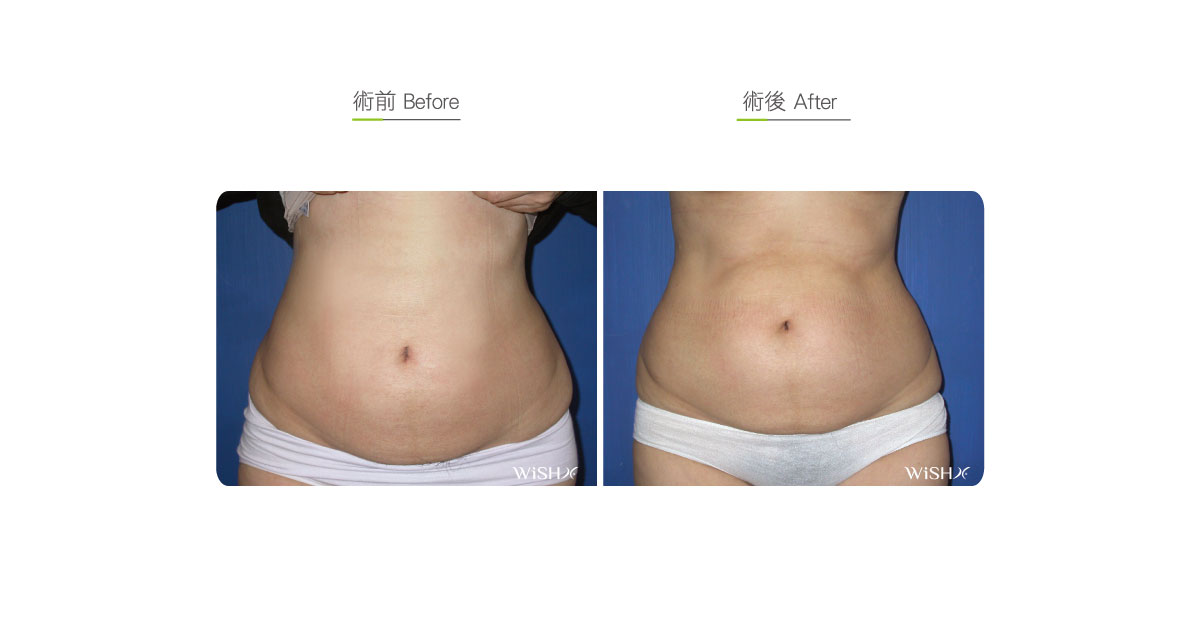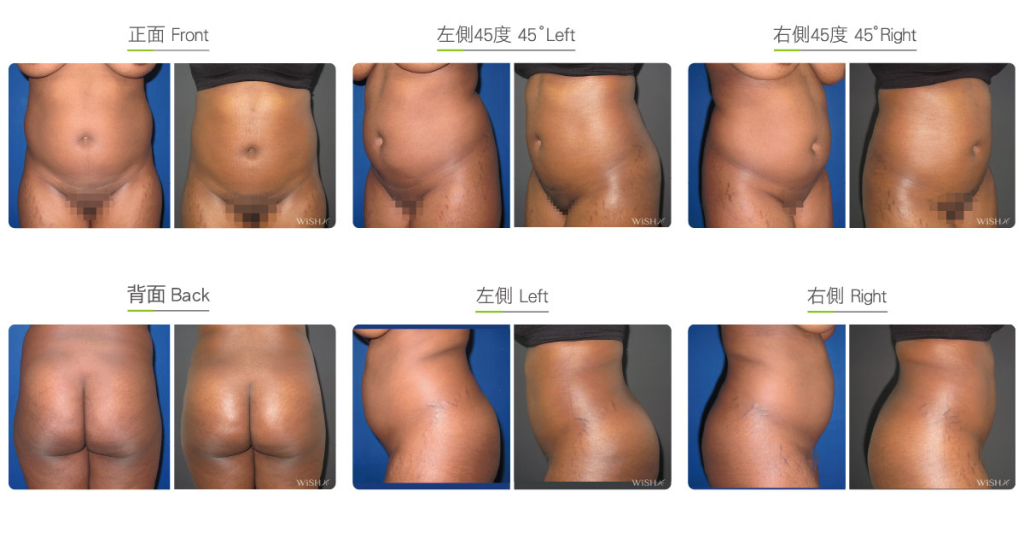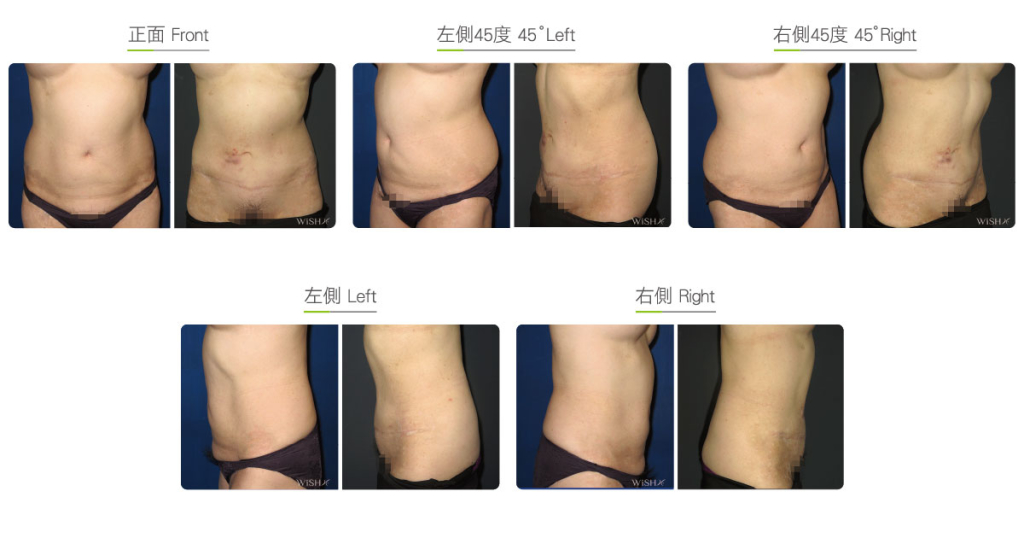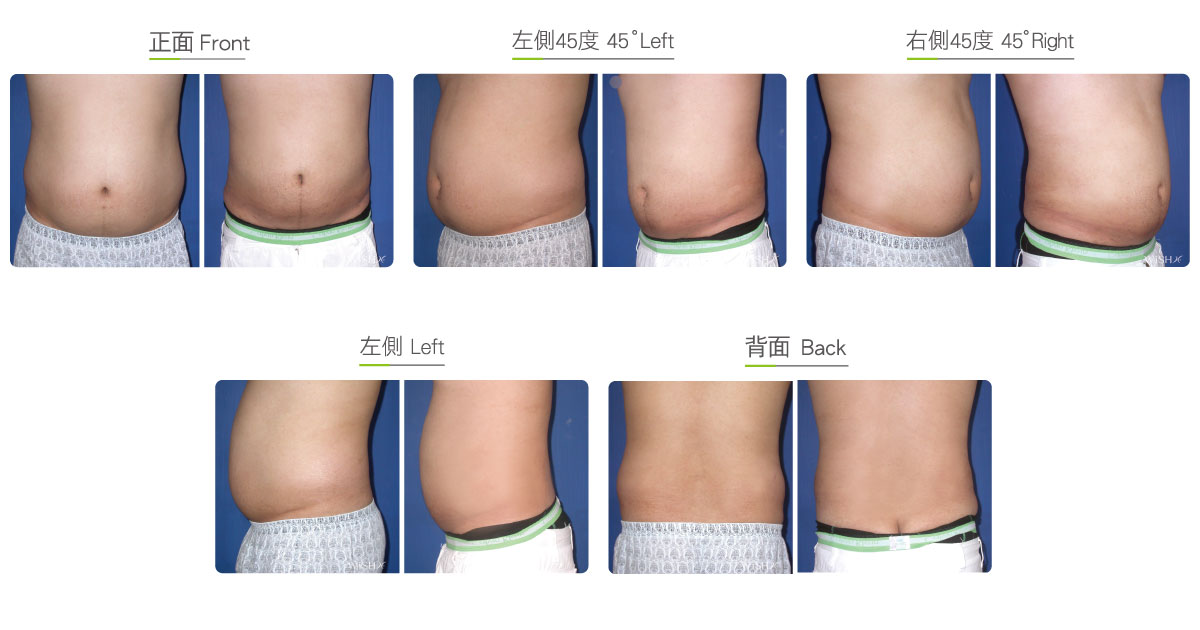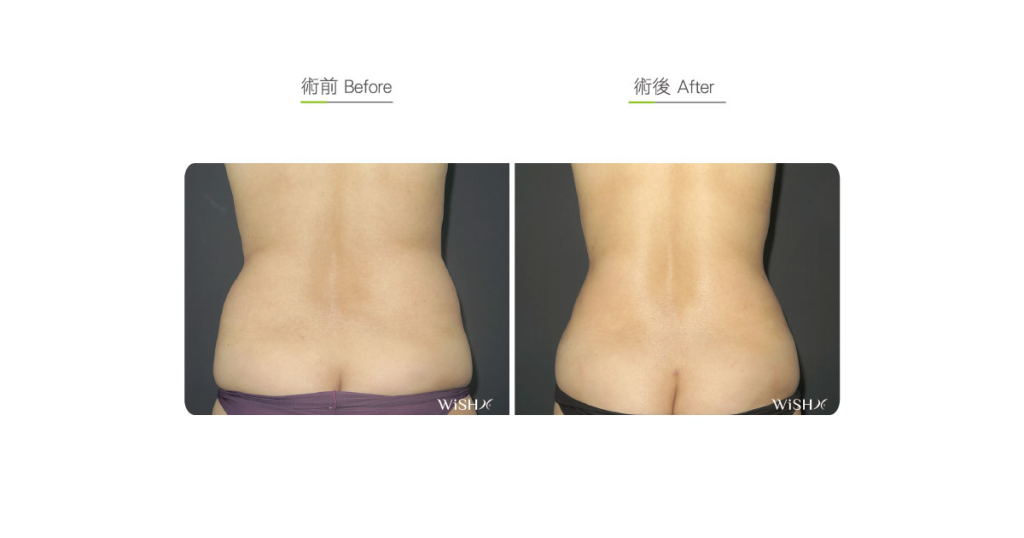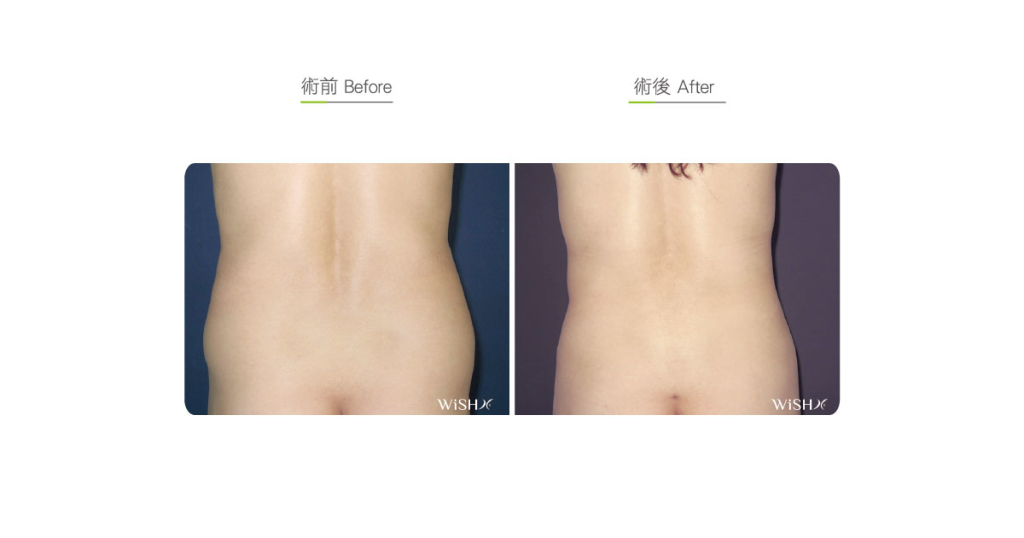Abdominal Liposuction
Abdominal liposuction mainly involves the upper and lower abdomen and bilateral waists, and if liposuction extends to the posterolateral superior pelvic cavity (love handles), it is referred to as circular abdominal liposuction. Lumbar and abdominal fats are primarily accumulated due to diet energy or obesity and mostly deep fats, so liposuction quantity and effects are generally distinct. Nevertheless, abdominal liposuction is only applicable to young patients with good skin elasticity. Senile patients with loose skin or those with a lax abdomen and pregnancy creases should not consider undergoing liposuction alone but should rather choose abdominoplasty combined with lumbo-abdominal liposuction (tummy tuck), which does not aggravate abdominal laxity or creases because of liposuction, thus entailing secondary abdominal plastic surgery afterwards. The surgical incision is made superior or inferior to the umbilicus or approximately 0.5 cm above the bikini line, which is hidden and less likely to be noticed. If patients want to undergo posterior waist liposuction, another 0.5-cm incision is made at the mid-gluteal fold. The surgery involves the perfusion of liposuction sites with hemostatics and painkillers, followed by the application of Ultra-Z to suction deep and superficial fats in a radial manner via the incision, which removes 800–1000 cc of fats on average. Patients should wear a compression garment over the waist and abdomen for 2–3 months postoperatively to accelerate the flatness and skin adhesion of liposuction sites.
Surgical conditions
Duration
- Type of anesthesia: IV sedation + local anesthesia or general anesthesia
- Type of incision: A 0.5-cm incision in the umbilicus or superior to the bikini line
- Recovery: 3–5 days
- Removal of stitches: 7 days
General instructions
No food and water on the day of surgery
Preoperative:
- Suspend the use of anti-coagulants (if taken) 1 week preoperatively.
Postoperative:
- Avoid exertional activity or use of the abdomen for 1 week postoperatively.
- Wear an abdominal compression garment for 3 months postoperatively to prevent skin looseness.
- Undertake diet control or weight loss for 6 months postoperatively to obtain better results.
- Control weight increase for a long time after the operation to avoid the recurrence of obesity.
Ideal candidates
- Patients with abdominal fat thicker than 1.5 cm
- Those with a rotund waist and abdomen or pail-shaped waist
- Male patients with a beer belly
- Patients with uneven fat deposits due to obesity or recurrent obesity
- Those with an uneven abdomen due to prior liposuction
Possible complications
- Uneven skin
- Abdominal laxity
- Skin numbness
- Pigmentation (temporary)
Surgical advantages
-
Surgical results are rapidly and obviously confirmed.
-
As there are no vital blood vessels and nerves, the surgery is very safe.
-
The surgery causes mild pain, but the recovery is rapid.
-
The scar is hidden in the umbilicus and is less likely to be noticed.
Surgical drawbacks
-
Excess liposuction may cause abdominal laxity or unevenness.
-
It only decreases the amount of superficial fats instead of correcting the rotund abdomen contour.
-
It does not improve the abdominal muscle or skin laxity induced by childbearing.
-
It is not applicable for patients with a severe loose abdomen or pregnancy creases.

